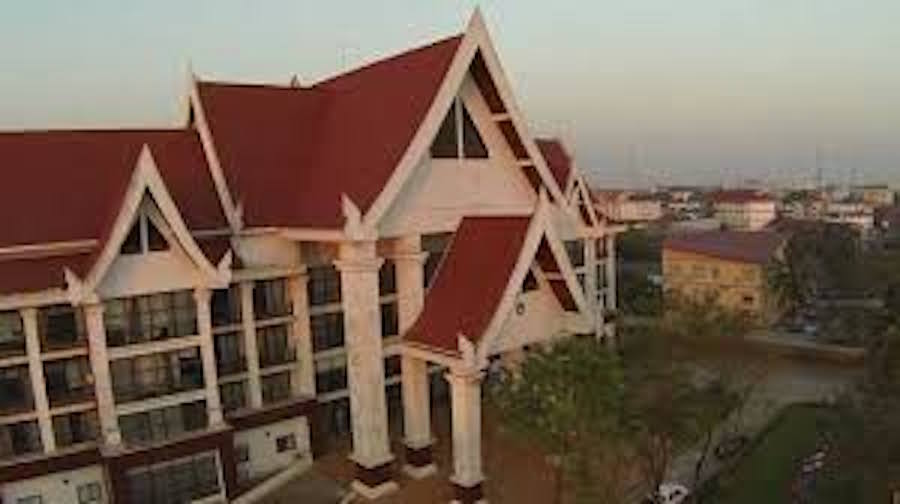Vietnam’s Ministry of Industry and Trade (MOIT) today said it will remove 471 small and cascade hydropower plants from its Power Development Plan 7 (PDP 7) that would have had a combined installed capacity of 2,059 MW. MOIT also rejected another 213 potential projects because of environmental and efficiency concerns, according to locally published reports.
Category: Viet Nam
Commission chief insists ‘imperfect’ body has river basin’s interests at heart
AS THE Mekong region faces intensifying challenges from developments needed by its riparian countries including Laos’ latest mega-project, the Pak Beng Dam, the Mekong River Commission (MRC) insists that it is still the best institutional arrangement to ensure sustainable development for the basin.
Pham Tuan Phan, who assumed the post of MRC chief executive this year, stressed that point while delivering his presentation about the organisation, empowered by the 1995 Mekong Agreement, at the Greater Mekong Forum last week, where leading river experts and policy-makers attended to find out the best approach to ensure the river’s sustainable development.
Laos Submits Mekong Dam Proposal
The government of Laos has submitted a request to the Mekong River Commission (MRC) secretariat to construct a dam on the Mekong River in the country’s northern Oudomxay province.
A call for basin-wide energy plans
Preparatory work for the next big dam on the Mekong — Pak Beng — in northern Laos has begun. This news supports the widespread narrative that the current rapid pace of dam construction on the Mekong River will continue until the entire river is turned into a series of reservoirs. Certainly the construction of even a few large dams will severely impact food security in the world’s most productive freshwater fishery and sharply reduce the delivery of nutrient-rich sediment needed to sustain agriculture, especially in Cambodia and Vietnam’s Mekong Delta.
However, our ongoing research and communication with regional policymakers provides compelling evidence that not all of the planned dams will be built due to rising political and financial risks in the region. As a consequence, we have concluded in our most recent report that it is not too late for the adoption of a new approach that would optimise the inescapable “nexus” of tradeoffs among energy generation, food security, and water use and better protect the core ecology of the river system for the benefit of future generations.
‘Environmental refugees’ in Mekong River Delta expected in future, experts say
An environmental refugee is defined by Prof Essam El-Hinnawi as someone forced to leave their traditional habitat, temporarily or permanently, because of a marked environmental disruption.
Vietnam, instead of ‘environmental refugees’, uses the world ‘resettlement’ or ‘migration’, because ‘refugee’ proves to be a ‘sensitive word’ in Vietnamese.
Myanmar to consider becoming full member of Mekong River Commission: president
Visiting Myanmar President U Htin Kyaw said Wednesday that his country agreed to consider becoming full member of the Mekong River Commission (MRC).
U Htin Kyaw made the remark while holding talks with Vietnamese counterpart Tran Dai Quang in Vietnam’s capital Hanoi during his state visit to Vietnam, reported the state-run news agency VNA.
Coal Plants Make Up Half of Vietnam Goverment’s Blacklist of Polluting Projects NGOs Point Out Urgent Need for Action
Following growing public alarm triggered by a series of major industrial pollution disasters the Ministry of Industry and Trade last week flagged 28 projects – including more than a dozen coal plants – as warranting “special monitoring” due to the risks they pose to the environment. The coal plants, which involve the state-owned power utility Electricity of Vietnam (EVN) or Vietnam Oil and Gas Group (PVN), have become flashpoints for public alarm due to widespread pollution affecting public health and other industry sectors such as farming, fishing and tourism.
Report reveals a big dependence on freshwater fish for global food security
Freshwater fish play a surprisingly crucial role in feeding some of the world’s most vulnerable people, according to a study published Monday (Oct. 24) in the Proceedings of the National Academy of Sciences.
“It was eye-opening just how many people are deeply dependent on freshwater fisheries as sources of protein,” says Pete McIntyre, a lead co-author of the study and professor of zoology in the Center for Limnology at the University of Wisconsin–Madison. “Many people in poor nations do not get much animal protein to eat, and freshwater fish provide protein for the nutritional equivalent of 158 million people around the world.”
Chinese firm’s zinc project in central Vietnam sparks environmental concern
A Chinese firm has proposed building a zinc mill at an economic zone in the central Vietnamese province of Thua Thien-Hue, raising a few eyebrows among local experts and members of the public.
In Vietnam, telling the truth is criminal ‘propaganda’
On Oct. 10, police in the south-central province of Khanh Hoa arrested a popular blogger, Nguyen Ngoc Nhu Quynh, 37, who writes under the pen name Mother Mushroom. She is co-founder of a network of independent bloggers who often find themselves in the crosshairs of a regime that strictly controls the news media and does not tolerate dissent. Radio Free Asia quoted the network as protesting that Ms. Quynh is an “activist who has advocated for human rights, improved living conditions for people, and sovereignty for many years.”









